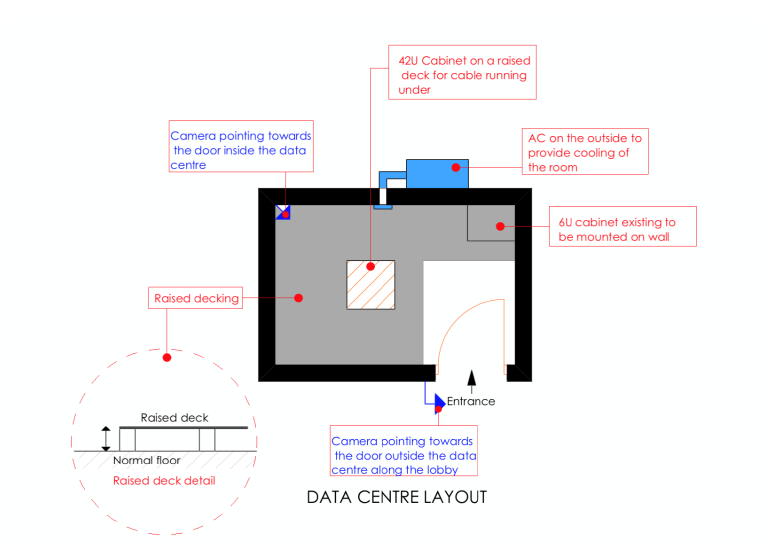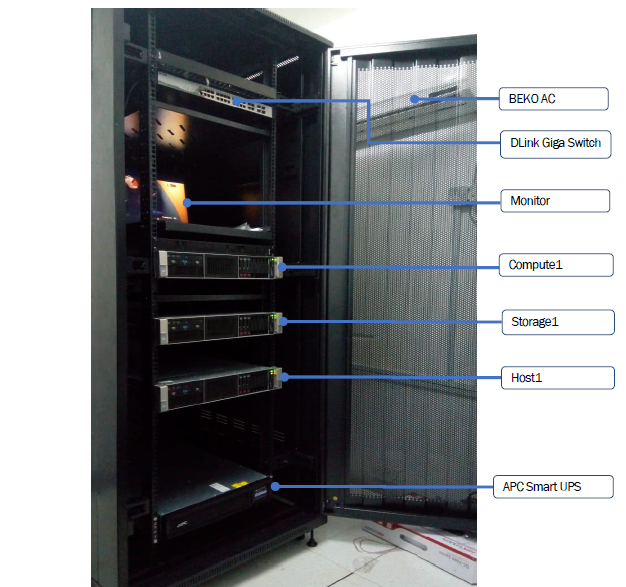Case Studies
- LIA Center rely on Lean IT Support to Serve Community Leaders
- DAR Regional Office
- Nandi County Deploys Scalable IT for County-wide Operations
LIA Center rely on Lean IT Support to Serve Community Leaders
About Life in Abundance International
Life in Abundance is an established non-profit development organization. LIA’s training centers serve to train churches, organizations and community leaders around the world with LIA’s community development model and how to implement it in their own communities. This is a model that has been implemented, refined, monitored, evaluated and replicated with hundreds of churches in twelve countries across Africa and the Caribbean. The LIA Center in Kenya is a Hub with three wings complete with a hotel accomodation wing to compliment the training center.
The LIA Hotel aims to provide a tailored space and accomodate a curation of community leaders. In order for the hotel to ensure its multinational members have the essentials they need during their stay, is core to what the Hotel team aims to achieve every day.
The Challenge
The team at LIA Hotel is always thinking about how to create spaces that guests enjoy working. They also want to make sure their guests don’t have to worry about the physical space and whether or not their computer will be able to connect to the Internet.
When we first joined to support the LIA Center, there was only one person available to look after the entire network across the three Phase complex. This required an immense amount of time to investigate and troubleshoot when problems arose. As the Property team prepared to open the new Hotel wing in addition to the training and office wings, the LIA Property team decided to proceed with a full stack solution as it would be easier to manage and provide a great experience for end users.
Our support team was tasked to scale the internet and phone network across the three Phase complex, and also respond to highly technical problems, and manage escalations.
The Solution
With migration to network monitoring and support, the LIA Center went from a network that was performing poorly and experiencing high packet loss to a network that is, “humming along very nicely" across the entire complex.
The support team also monitors the network ensuring that priority is given to applications like voice and video allowing both guests and LIA staff to work cross-functionally and across regions and time zones. There are also a wide range of activities on the network, including data-intensive applications, file transfers, cloud applications, and more, all running at the same time. With all that, clients’ expectations for crystal-clear video conferencing and latency-free phone calls is not compromised.
The Value
Prior to the migration, there was only a labor intensive way to satisfy the network requirements for the LIA Center. Yet today, the LIA team can now service guests and rely on their network to that satisfy unique requirements for its guests. The ability to truly tailor solutions to individual clients has allowed the mindset of “you tell us what you want and we can make it work” a reality.
DAR Regional Office
The buildings designed by Zimmer Gunsul Frasca (ZGF) Architects, the eighth largest architecture firm in the United States, make a strong first impression. To create these unique environments, ZGF's teams of architects and project managers rely on wireless networking to access design software and for web-based collaboration.
ZGF used a legacy wireless solution for many years. According to systems administrator Ron Pike, the small IT team found it unreliable and difficult to manage remotely. When ZGF prepared to move its headquarters to a new award-winning office in Portland, the firm wanted to deploy a superior wireless network solution for the new space. Ideally, this solution would also be deployed in the branch offices in L.A., Seattle, New York, and Washington D.C., and everything would be centrally managed.
Pike recommended Meraki as the best choice for a cost-effective, centrally-managed wireless solution for all the offices.
speeds, good management tools, and industry standard security. We got all of these features.
"I'd have to say that if the access points looked clunky, it would have made us think," Pike acknowledged. "But they look very clean."
The best thing about deploying Meraki, Pike said, is the network's reliability. "I haven't noticed any outages at all," he said. "It's a very robust service."
Nandi County Deploys Scalable IT for County-wide Operations
About Nandi County
Located in the Great Rift Valley region, Nandi County administration for ICT Infrastructure and Systems Directorate was tasked with Technology and Planning; to upgrade the network technology and overall information systems for the County Government.
The Challenge and Setup
The team led by Mr. Jonathan Miso opted for a new network setup built around a data centre model. Its purpose? built to house enterprise computing equipment running services for organizations such as Kapsabet Referral Hospital, a Support Call Center, Offices among other proposed case-site applications
This was a first for the County administration and it was imperative to envision support for a future upgrade on to Tier II and III of the data center.
Nevertheless, the proposed Tier I setup had to support powerful computing and communications affordably in relation to setup and maintenance. In addition, the network upgrade also supported a dedicated 100mbps uplink capability and GSM Trunking on setup.
The Solution
The computing environment was achieved using cloud stack for VMs, network and storage provisioning automation. This 'provisioning' solution was key to the network design. As with many institutions, with a lean IT staff managing the network for the entire campus; Nandi County administration required an enviroment that was easy to configure, manage, and troubleshoot, even remotely.
The robust administration and visibility provided by the vitualization dashboard, made the network design agile and scalable. Unlike other deployments, this low-touch configuration means that the team has on-demand elastic cloud computing service capabilities, for the storage and network, all under one dashboard. This cuts down the time the team may spend in provisioning end user resources on the new network. The cloud dashboard also gets rid of error-prone manual configuration and makes sure the network is secure.
The Value
The implementation of this network design unlocked features and benefits, including how it lets you:
-
Monitor performance via a common platform for ICT teams, including County officials
-
Increase resource capabilities for scale as needed; without retooling.
-
Break silos and create a common language between IT and County service operations
Unified monitoring results into faster communication, data-driven decision making while enabling performance bottlenecks to be resolved based on key metrics and reduces the mean time to business awareness.
The delivery of a core set of capabilities that could scale as needed, rather than having different infrastructures and different application capabilities for every use-case; means that the ICT team is going to be free from both building and retooling, for the purpose of enabling agility into their IT resources.
When IT and the business have a common language, County officials and their IT counterparts are able to collaborate together on a single source of truth. For example, operations don't care that a particular server is up, they care that a task was completed successfully.

